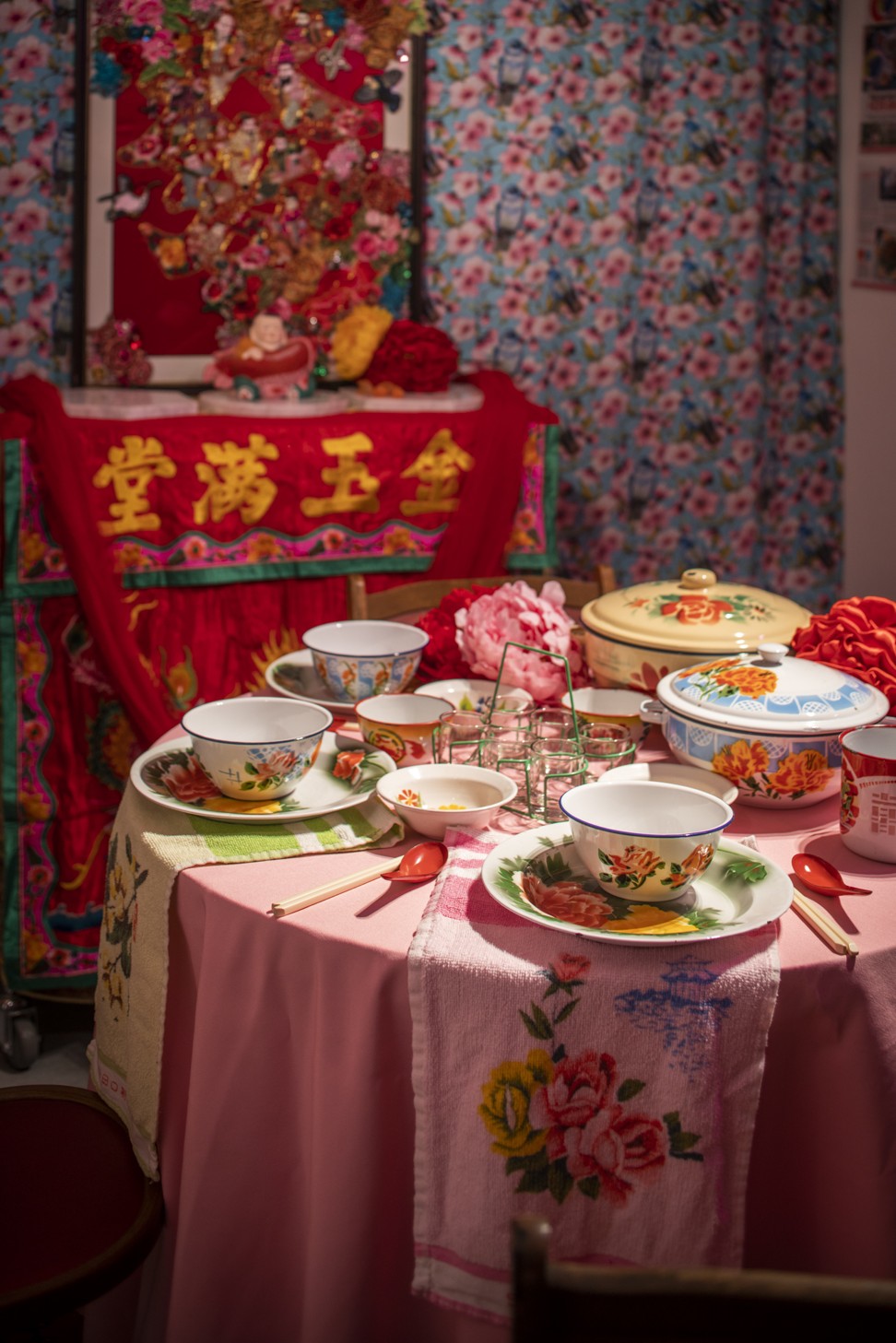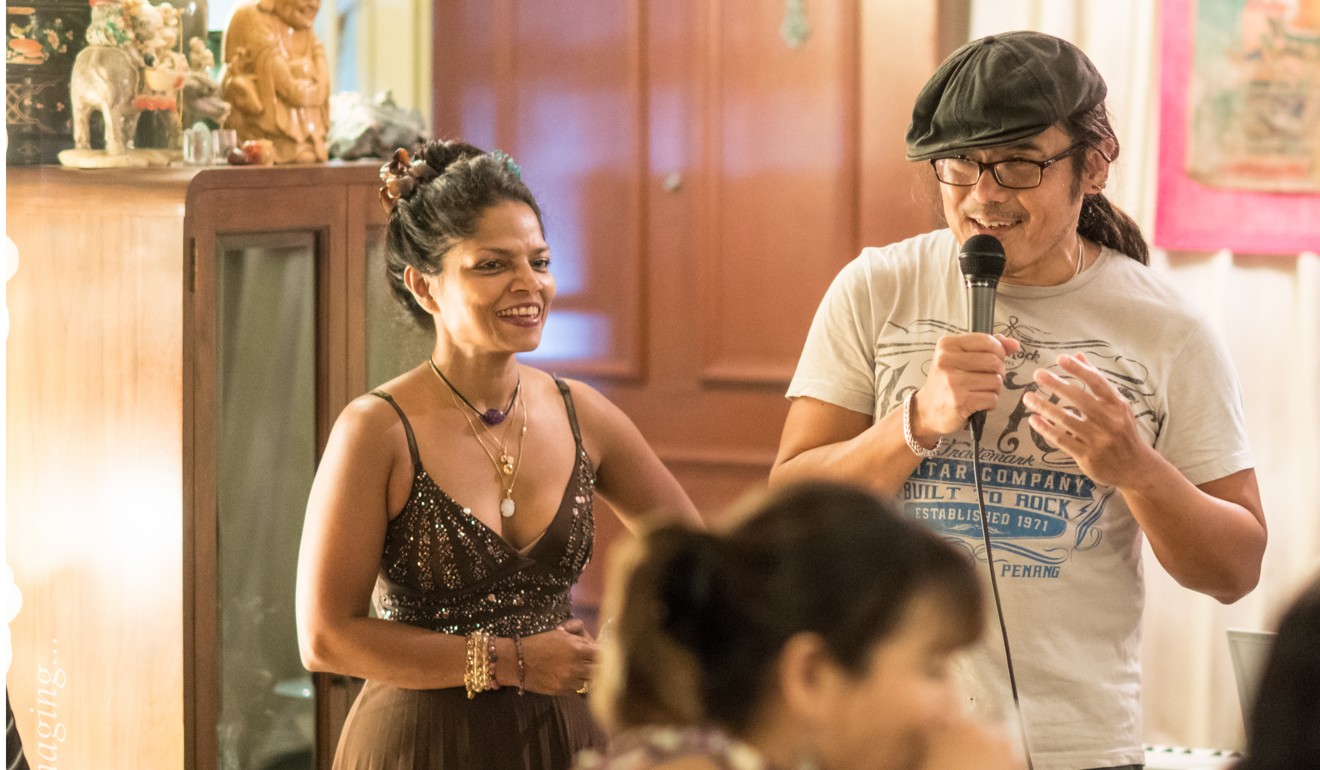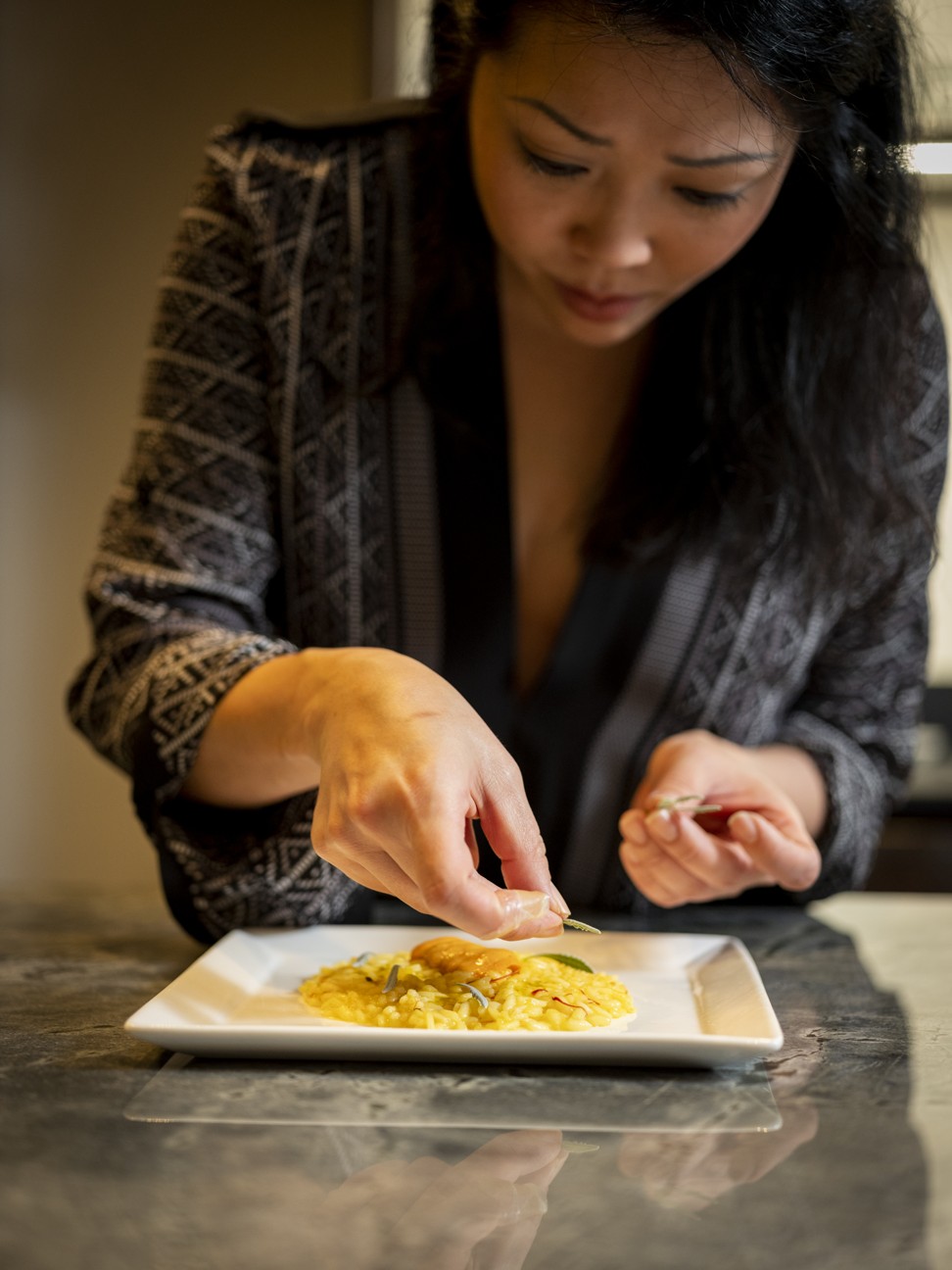
Inside Singapore’s private kitchens, where chefs share their food, culture and personalities
- The private dining scene in Singapore is flourishing thanks in part to a government initiative to foster small, home-based businesses
- We talk to seven private kitchen chefs relishing the opportunity to let their creativity run free and tell the stories behind what they serve
As a founding member of the Singapore Symphony Orchestra, classical violinist Lynnette Seah may seem an unlikely ambassador for Peranakan cuisine, a truly fusion cooking style developed over centuries by Straits-born Chinese. Yet it is a role she has embraced.
Seah was also one of the pioneers of private dining in Singapore, she says, when she opened Lynnette’s Kitchen at her home in the hip Tiong Bahru neighbourhood in 2014.
Today, thanks in part to a government initiative to foster small, home-based businesses, the private dining scene in Singapore is flourishing and reflects the cosmopolitan nature of the city state.
“I am a self-taught cook with a sensitive palate and good memory for taste, which helps when I recreate my mum’s traditional flavours,” says Seah, a winner of Singapore’s Cultural Medallion. “She is the main inspiration for my cooking.”
Is Singapore’s ‘Unesco’ food hawkers are so good, why pay them so little?
The primary characteristics of Peranakan cuisine, according to Seah, are its unparalleled range of spices and other ingredients, including lemongrass, turmeric, tamarind, palm sugar, candlenut and coconut milk.
“The trick of pulling off Peranakan flavours is in balancing the spices with sour, sweet and savoury flavours, which makes it the most complex of all cuisines, in my opinion,” she says.
Seah says she sources the freshest ingredients and combines them to produce authentic home-cooked flavours. Her prime ribs are braised with fresh and dried chillies, lemongrass, candlenut, shallots and fresh sambal.

For a crab vermicelli broth, she adds young ginger and rice wine to enliven the stock. Fermented soybeans and coconut sugar are also sprinkled into her assam pedas fish (a savoury curry) to give it a fiery full-bodiedness.
Shen Tan, who runs Ownself Make Chef in a flat in Singapore’s Commonwealth area, says she likes the freedom of running a private kitchen without the constraints that come with being a chef in a traditional restaurant.
“I can let my creativity run free, really get to know my diners and tell the stories behind what I serve,” Tan says.
“We are seeing more chefs going down the private dining route as it allows them to work in a more relaxed environment with more room to create.”

Tan, who is also self-taught, previously worked as an events marketer. She believes it is the details that make a private dining experience special.
For what she describes as her “mod sin” – or modern Singaporean – cooking, she uses quality ingredients, such as Wagyu short ribs, but sources local produce too.
Tan also revels in the complex layering of flavours that characterises Peranakan cuisine, with spices from Thailand, Indonesia and Malaysia. One of her signature dishes is a seafood congee blended with a briny sauce typically used in mee siam (a rice vermicelli noodle). She sees her culinary creations as a way of paying homage to tradition while adding new elements.
Tan says she is also inspired by architecture and fashion in the way she assembles her dishes to give them a full flavour. She experiments with home-grown Singaporean favourites such as kaya (a spread made from pandan), nasi ulam (a steamed rice dish with vegetables and spices), and a durian and salted egg dish.

For Tinoq Russell Goh, private dining is as much about community as it is about food. He tries to recreate a traditional kampong (village) vibe at his flat in Tiong Bahru.
Dining in Goh’s home is like visiting an old friend who prepares an unpretentious meal with familiar home-cooked flavours, he says.
“I try to create a welcoming ambience in my apartment by adding special touches,” Goh says, adding that his private kitchen, Pasir Panjang Boy, is named after the neighbourhood where he spent his childhood.

Before becoming a chef, Goh was a make-up artist for 20 years, which is why he likes colours. The quirky decorations in his dining space include enamel vases, tiffin carriers and fish-shaped lanterns.
The essence of Peranakan cuisine, according to Goh, is its refined flavours and simplicity of preparation.
“Be it fresh herbs, braised or steamed meat, or the density of vegetables in Peranakan food, everything has to be perfected patiently.”

To help create a fresh and original menu, Goh cultivates herbs in a community garden, where he invites his neighbours to pick what they need.
The herbs include Indonesian bay leaves, buntong ginger, lemongrass, kaffir lime and butterfly pea flowers. They all complement Goh’s kampong-style concoctions, such as ngoh hiang (crispy fried meat rolls), lemongrass chicken and nonya bakwan (a soup made from pork and crab meatballs).
“Food brings people together, because at the end of the day it’s about bonding over food. Food calms tired minds and bodies. It soothes frazzled nerves and has the power to heal,” he says.

Rose Sivam, a television producer turned chef whose cultural roots are a blend of Sri Lankan, Peranakan and Eurasian, offers diners a “taste of the world” menu at her private kitchen Relishdotsg in Serangoon North. At Relishdotsg, dinner could be African, Cajun, Sri Lankan, Indonesian or Moroccan.
“We constantly offer new themes blending food and music. Among the nights I’ve hosted, highlights include belly dancing with Middle Eastern cuisine, Bollywood night with north and south Indian cuisine, New Orleans jazz night paired with French Creole cuisine, and Shanghainese and Rasa Singapura themed menus,” she says.
“We cook, serve and share our food, culture and personality in a home gallery complete with antiques from the region and beyond. So culture is rich and heritage is preserved with a sense of family belonging that is shared with our guests.”

Candice Leong, who runs The Gluttonous Temptress in a spacious bungalow off upper Bukit Timah Road, is passionate about wanting to take private dining in Singapore to a more international level.
Leong serves themed dinners that are unique for their premium produce and range of cultural influences.
Leong has lived in places as far-flung as Argentina, Germany, Spain, Italy and Hong Kong. Her “Eat the Seasons” menus – offered throughout the year – include ingredients such as Piedmont white truffle during November and December, and sea urchin between May and July.
“Being able to work with seasonal produce is a privilege … where I can, I try to incorporate as much of the produce of that [specific] region,” Leong says. “When I host my Piedmontese ‘Truffle Eats: The Season’ dinners, I specially bring back hazelnuts and fassona beef from there. I also use a Barbera d’Alba, a household red wine, to marinate veal and reduce a Moscato d’Asti to a sticky condiment to go with some Robiola or Toma cheese.”

Lee Yum Hwa is a former corporate tax accountant who runs Ben Fatto 95, an understated private kitchen in the Paya Lebar area.
Lee focuses on regional specialities to showcase various details and traditions of Italian cuisine.
“With most Italian restaurants that operate on a scale, it’s challenging to focus on details, and some steps in the process may be disregarded,” Lee says. “For instance, the labour-intensive methods of folding tortellini and cresc’ tajat [a pasta dish made of polenta] thrive out of home kitchens because the matriarch believes that family and friends are worth the effort.”
Moreover, making pasta in front of guests is a great way for them to connect with their food, Lee adds. “There’s nothing like realising that the hand-formed tortelli di zucca made fresh minutes ago now sits in your bowl,” he says.
Love at first bite: why Singapore is the land of good food souvenirs
Sam Wong, a wholesaler specialising in wedding and dancing shoes, never imagined he would one day be running a private kitchen using his traditional Cantonese recipes.
When his signature roast duck dish became a hit with his wholesale clients, Wong decided to roll out his full repertoire of old-school Cantonese favourites. He opened Lucky House Private Cantonese Kitchen in his terrace house on Upper East Coast Road.
Wong can seat 10 people in his themed “art room” and 16 in his “vintage room” – both converted bedrooms. The venue is so popular that diners need to reserve a table a month or two in advance.
One aspect of traditional Cantonese cooking is slow cooking, Wong says. His roast duck is marinated for two days, then sun-dried for a day before being roasted in a charcoal oven for an hour.
One of his signature dishes, old hen soup with sea coconut and cactus flower, is boiled for eight hours over a charcoal fire before Jinhua ham is added to give the broth a natural saltiness.

